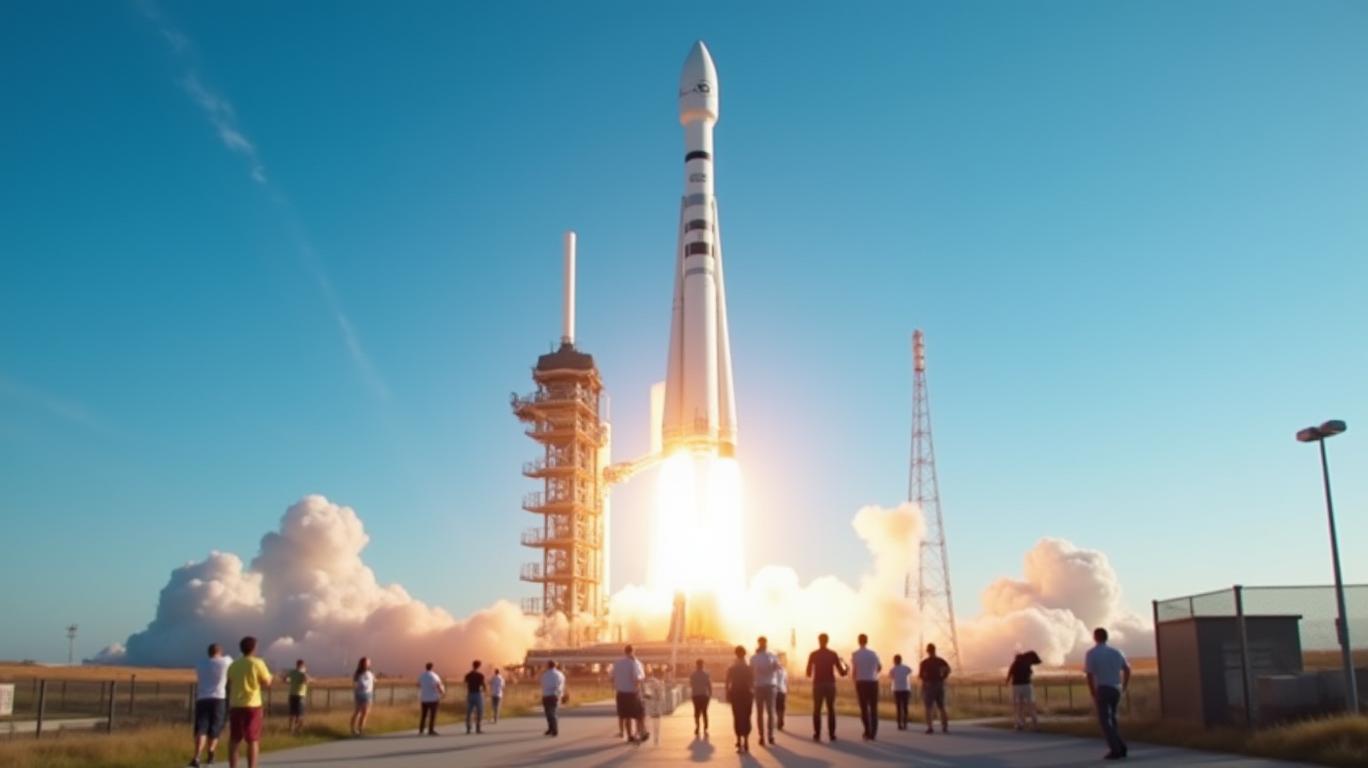Starlink's Orbit of Dominance: How SpaceX Is Redefining the Future of Space Technology and Investment
The aerospace sector is undergoing a revolution, and SpaceX's Starlink
stands at the epicenter of this transformation. With over 8,700 satellites launched as of May 2025—7,500 of which are operational—Starlink is not just a satellite network but a $127 billion valuation juggernaut poised to redefine global connectivity. This is no incremental upgrade; it's a seismic shift in how we access information, communicate, and even perceive the boundaries of Earth itself. For investors, the question isn't whether to act—it's how quickly you can capitalize on this paradigm shift.The Lightning-Fast Deployment of Starlink

Starlink's pace is nothing short of staggering. In just four months of 2025, SpaceX deployed 9 missions in May alone, averaging over 250 satellites per month. By May 23, the constellation had grown to 8,727 satellites, with plans to expand to 42,000 units by 2030. This isn't merely about quantity—it's about global reach. From war-torn Ukraine (where Starlink provided critical communication infrastructure) to disaster zones in Tonga, the network is proving its worth in the most demanding scenarios. With Direct-to-Cell satellites now operational, Starlink is no longer a niche service—it's a mobile broadband revolution, enabling 5G-like connectivity without ground towers.
The Rocket Reusability Revolution
SpaceX's mastery of rocket reusability is the secret sauce behind Starlink's scalability. Falcon 9 boosters now achieve 22 launches per rocket, shattering previous records and slashing costs by over 30%. This isn't just cost-saving—it's a structural advantage that competitors can't match. While traditional launch providers spend millions per flight, SpaceX's reusable rockets enable a $10 million-per-launch model—a price point that's both disruptive and insurmountable.
The aerospace sector's growth mirrors Starlink's trajectory. The XAR ETF, which tracks aerospace and defense companies, has surged 140% since 2020, underscoring investor confidence in the industry's future. But SpaceX isn't just riding the wave—it's creating the wave.
Beyond Satellites: Global Connectivity and New Markets
Starlink isn't confined to broadband. Its V2 Mini satellites—with quadruple the data capacity of earlier models—are paving the way for direct cellular service, a partnership with T-Mobile that could bypass traditional telecom infrastructure entirely. Imagine a world where rural Africa has faster internet than urban Manhattan, or where every ship at sea can stream 4K video. This isn't science fiction—it's the $50 billion global satellite market's next frontier, and Starlink is first in line.
Navigating the Challenges
Critics highlight risks: light pollution, atmospheric alumina from deorbiting satellites, and regulatory battles. But these are manageable hurdles, not showstoppers. SpaceX has already retrofitted satellites with visors to reduce glare, and its $1 billion environmental impact fund signals a commitment to sustainability. Meanwhile, competitors like OneWeb and Amazon's Project Kuiper trail far behind—Starlink's operational count is 5x larger than OneWeb's.
Why Invest Now?
The answer is simple: first-mover advantage. Starlink's infrastructure lock-in is unprecedented. Once a region adopts Starlink terminals, switching costs become prohibitive. With 7,500 satellites in orbit, SpaceX has already cornered the market for low-latency LEO broadband. The $30 billion annual revenue target isn't a pipe dream—it's a math problem.
Musk's track record speaks for itself. Tesla's valuation rose 1,200% between 2010 and 2020, and Starlink's potential dwarfs even that. With SpaceX's valuation now surpassing Boeing (BA) and Lockheed Martin (LMT), the question isn't whether Starlink will dominate—it's whether you'll be on the right side of this revolution.
Conclusion: The Stars Are Aligned—Don't Miss Your Launch Window
Starlink isn't just a satellite network; it's a $1 trillion opportunity in the making. The data is clear: rapid deployment, reusable rockets, and a first-mover's stranglehold on global connectivity are creating a moat no competitor can breach. For investors, this is a once-in-a-generation chance to back a company that's rewriting the rules of aerospace—and the sooner you act, the sooner you'll reap the rewards.
The sky is no longer the limit. It's just the starting point.
Disclosure: This article is for informational purposes only and should not be construed as financial advice. Always conduct your own research before making investment decisions.

Comments
No comments yet